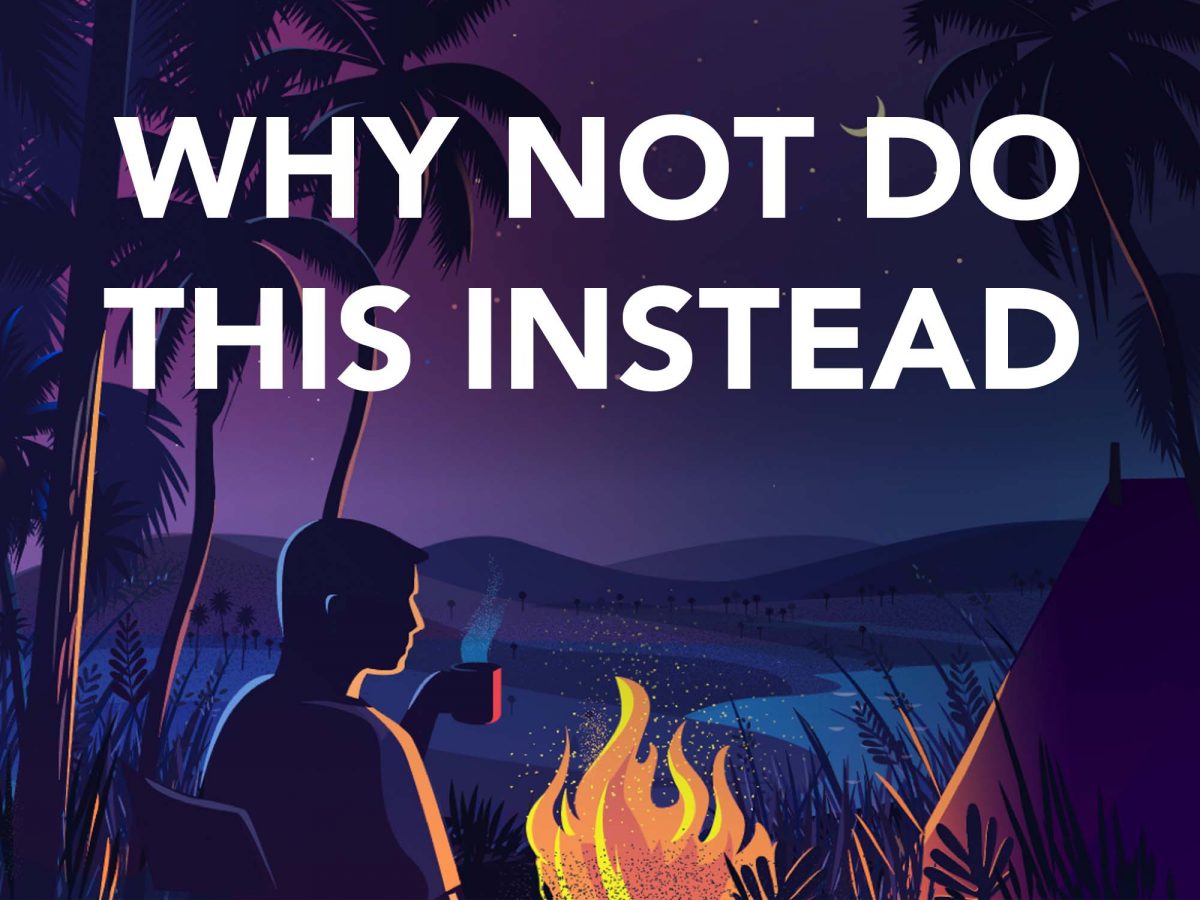I was answering this question that went like this “What is the best way to follow up after giving a demo of an IT enterprise product?”. Below is my answer. I think its core mindset elements can be taken for any business person.
The Answer
It might sound counter-intuitive but here’s my answer: I wouldn’t.
I know — you’ve spent time and resources, probably money as well to deliver that demo. You’re not getting them back and that’s a fact. If you’re discouraged by that, it might be an even longer “road” to be taken — but also a more rewarding one.
My thesis is this: if your demo didn’t convert them, two things are happening.
- The solution isn’t good enough and that can also mean it’s not on your side. It might not be a good fit for whoever your demo was given to — don’t totally exclude the possibility that it might be not good enough generally speaking.
- If there’s any doubt in your head that the solution does not bring a humongous amount of value, that’s when you start becoming discouraged.
Let’s dive a bit deeper into #1.
The reason why I wouldn’t follow-up after a demo is that if it’s not a good fit, then the company is clearly needed to get back to finding the right fit with another client — that ends there.
If, on the other hand, the problem also consists of the utilitarian value layer of your solution, I’d take it as a message from the market. A message that says “it’s not desirable enough at this moment, it needs to be better”.
It can sound rough, you may skip this answer because it’s not what you want to hear. But it might be a mindset filter.
The motivation is simple: you want to get to a point where your customers are depending on you, given how much they get out of using your product. If you’re not there, back to the whiteboard.

If you’re not there and you take this “message” from the market, I’m just saving you time. And it’s not me — you’re saving yourself time. And buying yourself the future state where you can charge way more than you imagine now.
I’m saving you time and a lot of stress because you could go on for 5 years with follow-ups and the consequent disappointment, instead of focusing now for 6–18 months on making a solution that brings so much value, you won’t need to do follow-up calls/emails.
So depending on your character, take this as a message after 2, 4 or 6 cold turkey connections. Again, maybe it’s about the right fit, maybe something just happened on the other end and they’re in financial trouble.
Now for #2
If you’re in a place where you’re confident as hell that the solution brings actual value, what I wrote above for #1 will come into your mind natural. And while it can be very ego-heavy, it doesn’t have to be. It can be a matter of calm confidence, i.e. without some additional baggage. By that I mean unnecessary “yeah it’s their fault, they can’t see the value that I provide” or “they’re losers”
These are two quick examples of what I don’t want people to understand I’m preaching. You can simply move on without them — society is at a point where this is the standard but at the same time, we’ve just started adapting and maturing on to the next level (but that’s out of the scope of this answer).
Hey, in fewer sentences: once you know that what you offer provides enormous value, you won’t need to follow-up people — you’re not “chasing” because you know the relationship you want is clicking without friction (i.e. without you having to say indirectly “did you guys decide yet? did you forget about it? let me remind you”)
Besides, by giving time, sometimes (very rarely though, I know) things happen. Multiple times I haven’t followed-up and after a month I’ve got a message saying “Daniel, hey, sorry for the late reply. We’ve got this huge problem in our company because X happened but now we’re ready for the engagement to start, should you still be free.”
I’m afraid of this though
I’m afraid people will listen to this and then proceed to not follow-up because of ego. Because a voice will say “Don’t follow-up, you’re better than that”. It can go on a wrong path as well.
The mindset core would be this, I’d say — “Why spend time chasing a non-optimal relationship with people that are not fully interested, instead of devoting that time to making the solution exponentially more helpful?”
I’m also aware that this does not apply all the time — what I’ve been always vouching for is listening to your instinct. All this post is trying to do is expand the range of what your instincts can do. If you feel like you should follow-up, by all means do it.
A very big caveat
If you’re in need for short-term revenue, then yes, obviously follow-up and chase it. But I only mean real short-term — you’re close to bankruptcy or some other urgent need. Calming that voice in your mind that tracks how much money you’ve made this year (especially as opposed to your friend John who did +$50,000 more last year) does not count.
Ideally, if you’re running a business that shouldn’t be the case. But hey, I understand, sometimes situations happen.
One last thing to mention
Buckle up for the damn long-term ride of this. That exponentially becomes an easier thing to do one you believe in what your solution does (#2 in this written piece). I say exponentially and I want to highlight it because we, as humans, naturally think in linear terms.
Exponential happens, though, when you’re in for the long-term.
About Ch Daniel
I run chagency, an experiences design agency that specialises on helping tech CEOs reduce user churn. We believe experiences are not only the reason why users choose not to leave but also what generates word of mouth. We’re building a credo around this belief.
If I’ve brought you any kind of value, follow me and get in touch here: LinkedIn | Twitter | Email
I’ve also created an infinitely-valuable app for sneaker/fashion enthusiasts called Legit Check that impacted hundreds of thousands over millions of times – check it out at chdaniel.com/app
Illustration Credits: Ranganath Krishnamani
Please share this with someone and subscribe to our newsletter!— helps us keep pumping content?




